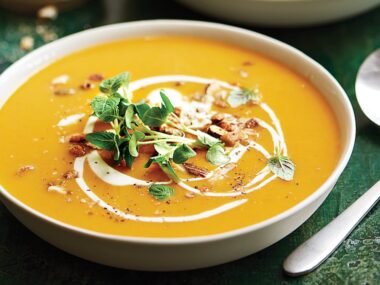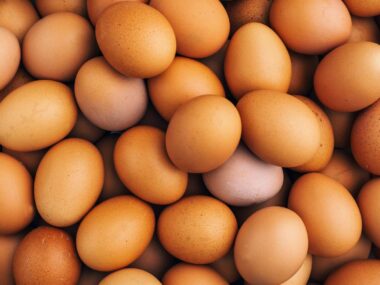Amala, a traditional Nigerian dish, holds a special place in the hearts and stomachs of many Nigerians. Made from yam flour, it is a popular staple food primarily consumed in the southwestern region of Nigeria, particularly among the Yoruba ethnic group.
However, the culinary landscape of Nigeria is rich and diverse, and this is reflected in the various regional variations of amala found across the country.
Southwestern Nigeria

In its place of origin, southwestern Nigeria, amala is typically made from yam flour (clubs) and served with rich and flavorful soups such as ewedu (jute leaves) and gbegiri (bean soup).
The preparation process involves boiling water to a certain temperature before adding the yam flour gradually while stirring continuously to achieve a smooth and stretchy consistency.
The result is a soft, dough-like substance that is rolled into small balls or served in a mound on the plate. The soups accompanying amala are often seasoned with assorted meats, fish, and spices, adding depth and complexity to the meal.
Northern Nigeria
In northern Nigeria, particularly among the Hausa and Fulani ethnic groups, a similar dish known as tuwon shinkafa is prevalent. Unlike the yam-based amala of the southwest, tuwon shinkafa is made from rice flour and has a slightly different texture and flavour profile.
It is typically served with soups such as miyan kuka (baobab leaf soup) or miyan taushe (pumpkin soup), which are known for their tangy and spicy flavours. The preparation of two shinkafa involves cooking the rice flour with water until it reaches a smooth, gelatinous consistency, which is then shaped into balls or served in a mound similar to amala.
Eastern Nigeria
In eastern Nigeria, particularly among the Igbo ethnic group, a similar dish known as fufu or kapu is popular. Unlike the smooth texture of amala and two shinkafa, fufu is often denser and stickier, made from fermented cassava or yam flour.
It is typically served with soups such as ora (oyster leaf soup) or nsala (white soup), which are known for their rich and aromatic flavours. The preparation of fufu involves fermenting cassava or yam flour with water and allowing it to sit for a few days before cooking it into a thick paste, which is then moulded into balls or served in a mound similar to amala.
Southern Nigeria
In southern Nigeria, particularly among the Ijaw and Urhobo ethnic groups, a similar dish known as starch or use is prevalent. Made from processed cassava flour, starch has a smooth and elastic texture similar to amala.
It is typically served with soups such as banga (palm nut soup) or oghwo (vegetable soup), which are known for their rich and hearty flavours. The preparation of starch involves mixing cassava flour with water to form a smooth paste, which is then cooked over low heat until it thickens, resulting in a soft and stretchy consistency.
In conclusion, amala is not just a single dish but a culinary tradition that varies widely across Nigeria’s diverse regions and ethnic groups.
From the yam-based amala of southwestern Nigeria to the rice-based won shinkafa of northern Nigeria, and the cassava-based fufu of eastern and southern Nigeria, each regional variation offers a unique culinary experience characterized by distinct flavours, ingredients, and cooking techniques.
Despite these differences, however, one thing remains constant – the love and appreciation for this beloved Nigerian staple food that brings people together, celebrating the richness and diversity of Nigerian cuisine.
Related Tags
Taiwo Olawuyi
Taiwo Olawuyi is a highly dedicated and passionate professional blogger, renowned for her ability to create captivating, informative, and engaging content in the realm of health and wellness. She holds a Bachelor's degree in Political Science from Olabisi Onabanjo University and a Master's degree in Adult Education from the prestigious University of Ibadan. Her profound passion for health and wellness, coupled with her unwavering dedication to her audience, serves as a constant source of inspiration and enlightenment for readers worldwide.











2 comments
I enjoyed it just as much as you will be able to accomplish here. You should be apprehensive about providing the following, but the sketch is lovely and the writing is stylish; yet, you should definitely return back as you will be doing this walk so frequently.
You’re so awesome! I don’t believe I have read a single thing like that before. So great to find someone with some original thoughts on this topic. Really.. thank you for starting this up. This website is something that is needed on the internet, someone with a little originality!